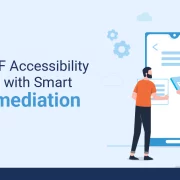Interactive learning is one of the most advanced and interesting learning methodologies that involve a learner and provide them with an enhanced e-learning experience. It goes beyond the conventional Click-next technique. It is more interactive and focuses on information processing and the learner’s mindset.
Q: What is interactive learning?
A: Via a range of interactive activities, including discussions, hands-on activities, simulations, and games, active learning entails actively involving students in the learning process..
Q: What are the benefits of ?
A: Student motivation, engagement, and information retention can all be enhanced by engaged learning. Also, it can support kids’ growth in teamwork, critical thinking, and problem-solving abilities.
Q: What are some examples of these learning activities?
A: Group discussions, role-playing exercises, case studies, problem-solving activities, games, simulations, and experiments are a few examples of active learning activities.
Q: How can this be incorporated into online education?
A: By the use of interactive quizzes and assessments, virtual simulations, online discussion forums, video conferencing facilities for live discussions, and virtual labs, interactive learning can be included in to online education.
Q: How can teachers implement engaging learning in the classroom?
A. Teachers can integrate active learning by incorporating group work, hands-on activities, interactive technology tools, and active learning strategies into their lesson plans. Hurix Digital provides innovative interactive learning solutions that enhance student engagement, foster collaboration, and improve knowledge retention for a more dynamic and effective classroom experience.
Q: How can engaging learning benefit students with different learning styles?
A: By offering a range of learning experiences tailored to different learning preferences, engaged learning helps students with diverse learning styles. For example, kinesthetic learners benefit from hands-on exercises, while auditory learners thrive in lectures and discussions. Hurix Digital designs engaged learning solutions that cater to all learners, enhancing engagement and comprehension.





















